LEGO is more than just a toy—it’s a universe of endless possibilities, and at the heart of that creativity is color. Whether you’re building a medieval castle, a sleek spaceship, or a vibrant cityscape, choosing the right colors can make all the difference.
But with over 100 unique colors introduced since LEGO began producing plastic bricks in the 1950s, identifying and distinguishing colors isn’t always easy. Some shades look almost identical, while others have been discontinued, renamed, or modified over time.
That’s why we created the LEGO Color Guide — your go-to resource for understanding and identifying LEGO colors, both past and present. Whether you’re a collector, MOC (My Own Creation) builder, set restorer, or LEGO enthusiast, this guide will help you navigate the vast world of LEGO colors with confidence.
Solid Colors
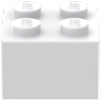 Very Light Gray / LEGO Gray
Very Light Gray / LEGO Gray1997-2004
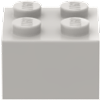 Very Light Bluish Gray / LEGO Light Stone Gray
Very Light Bluish Gray / LEGO Light Stone Gray2004-2013
 Light Gray / LEGO Gray
Light Gray / LEGO Gray1954-2008
 LEGO Dark Gray
LEGO Dark Gray1961-2006
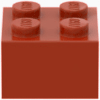 LEGO Rust
LEGO Rust1979-2005
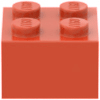 Dark Salmon / LEGO Bright Reddish Orange
Dark Salmon / LEGO Bright Reddish Orange2003
 Salmon / LEGO Medium Red
Salmon / LEGO Medium Red1997-1999
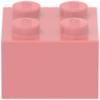 Light Salmon / LEGO Light Red
Light Salmon / LEGO Light Red1997-2002
 LEGO Sand Red
LEGO Sand Red2001-2004
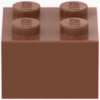 Umber / LEGO Umber Brown
Umber / LEGO Umber Brown2024-Present
 Brown / LEGO Earth Orange
Brown / LEGO Earth Orange1974-2006
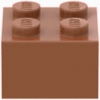 Light Brown / LEGO Brown
Light Brown / LEGO Brown2002-2006
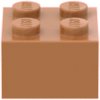 Fabuland Brown / LEGO Brick Red
Fabuland Brown / LEGO Brick Red1979-1991
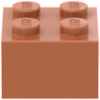 LEGO Dark Nougat
LEGO Dark Nougat2001-2004
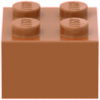 Sienna / LEGO Sienna Brown
Sienna / LEGO Sienna Brown2024-Present
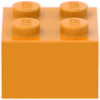 Fabuland Orange / LEGO Light Brown
Fabuland Orange / LEGO Light Brown1983-1987
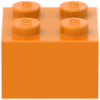 Brown / LEGO Earth Orange
Brown / LEGO Earth Orange1982-2005
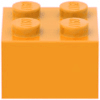 Medium Orange / LEGO Bright Yellowish Orange
Medium Orange / LEGO Bright Yellowish Orange1950-2007
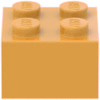 Light Orange / LEGO Warm Yellowish Orange
Light Orange / LEGO Warm Yellowish Orange1998-2004
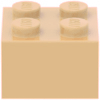 Very Light Orange / LEGO Light Yellowish Orange
Very Light Orange / LEGO Light Yellowish Orange2000
 LEGO Light Yellow
LEGO Light Yellow1994-2005
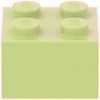 Light Lime / Light Yellowish Green
Light Lime / Light Yellowish Green1992-2007
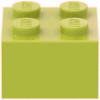 Medium Lime / LEGO Medium Yellowish Green
Medium Lime / LEGO Medium Yellowish Green1998-2005
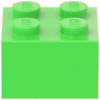 Fabuland Lime / LEGO Pastel Green
Fabuland Lime / LEGO Pastel Green1982-1986
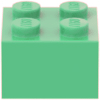 LEGO Medium Green
LEGO Medium Green1950-2004
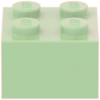 LEGO Light Green
LEGO Light Green1992-2005
 Light Turquoise / Medium Bluish Green
Light Turquoise / Medium Bluish Green1998-2004
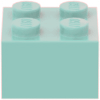 Aqua / Light Bluish Green
Aqua / Light Bluish Green1998-2006
 Maersk Blue
Maersk Blue1974-2011
 Sky Blue / LEGO Dove Blue
Sky Blue / LEGO Dove Blue2003-2007
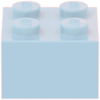 LEGO Light Blue
LEGO Light Blue1950-2007
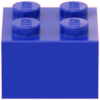 Dark Blue Violet / LEGO Dark Royal Blue
Dark Blue Violet / LEGO Dark Royal Blue2004-2006
 Violet / LEGO Bright Bluish Violet
Violet / LEGO Bright Bluish Violet1992-2004
 Blue Violet / LEGO Royal Blue
Blue Violet / LEGO Royal Blue2004-2005
 LEGO Lilac
LEGO Lilac2004-2007
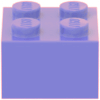 Medium Violet / LEGO Medium Bluish Violet
Medium Violet / LEGO Medium Bluish Violet1999-2004
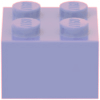 LEGO Light Lilac
LEGO Light Lilac2004
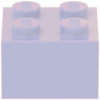 Light Violet / LEGO Light Bluish Violet
Light Violet / LEGO Light Bluish Violet1994-2002
 Purple / LEGO Bright Violet
Purple / LEGO Bright Violet1997-2006
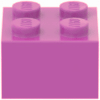 Light Purple / LEGO Bright Reddish Lilac
Light Purple / LEGO Bright Reddish Lilac1997-2006
 Sand Purple / LEGO Sand Violet
Sand Purple / LEGO Sand Violet2001-2002
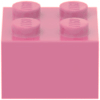 Medium Dark Pink / LEGO Medium Reddish Violet
Medium Dark Pink / LEGO Medium Reddish Violet1992-1993
 Pink / LEGO Light Reddish Violet
Pink / LEGO Light Reddish Violet1991-2005
 LEGO Light Pink
LEGO Light Pink1991-1994
Transparent Colors
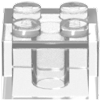 Trans Clear / LEGO Transparent
1950-Present
SHOP COLOR
Trans Clear / LEGO Transparent
1950-Present
SHOP COLOR
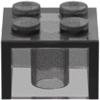 Trans Black / LEGO Tr. Black
2023-Present
SHOP COLOR
Trans Black / LEGO Tr. Black
2023-Present
SHOP COLOR
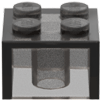 Trans Brown / LEGO Tr. Brown
1999-Present
SHOP COLOR
Trans Brown / LEGO Tr. Brown
1999-Present
SHOP COLOR
 Trans Red / LEGO Tr. Red
1969-Present
SHOP COLOR
Trans Red / LEGO Tr. Red
1969-Present
SHOP COLOR
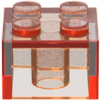 Trans Orange / LEGO Tr. Bright Orange
2003-Present
SHOP COLOR
Trans Orange / LEGO Tr. Bright Orange
2003-Present
SHOP COLOR
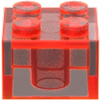 Trans Neon Orange / LEGO Tr. Bright Orange
1993-2023
Trans Neon Orange / LEGO Tr. Bright Orange
1993-2023
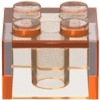 Trans Light Orange
2003-2006
Trans Light Orange
2003-2006
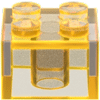 Trans Neon Yellow / LEGO Tr. Fluorescent Yellow
2001-2006
Trans Neon Yellow / LEGO Tr. Fluorescent Yellow
2001-2006
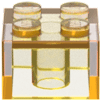 Trans Yellow / LEGO Tr. Yellow
1969-Present
SHOP COLOR
Trans Yellow / LEGO Tr. Yellow
1969-Present
SHOP COLOR
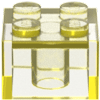 Trans Fire Yellow / LEGO Tr. Fire Yellow
2003-2006
Trans Fire Yellow / LEGO Tr. Fire Yellow
2003-2006
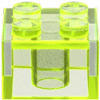 Trans Neon Green / LEGO Tr. Fluor. Green
1990-Present
SHOP COLOR
Trans Neon Green / LEGO Tr. Fluor. Green
1990-Present
SHOP COLOR
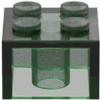 Trans Green / LEGO Tr. Green
1969-Present
SHOP COLOR
Trans Green / LEGO Tr. Green
1969-Present
SHOP COLOR
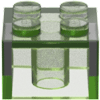 Trans Light Bright Green / LEGO Tr. Light Yellowish Green
2003-2006
Trans Light Bright Green / LEGO Tr. Light Yellowish Green
2003-2006
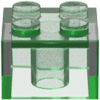 Trans Light Green / LEGO Tr. Light Green
2005-2006
Trans Light Green / LEGO Tr. Light Green
2005-2006
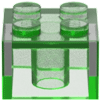 Trans Bright Green / LEGO Tr. Bright Green
2006-Present
SHOP COLOR
Trans Bright Green / LEGO Tr. Bright Green
2006-Present
SHOP COLOR
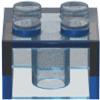 Trans Medium Blue / LEGO Tr. Fluorescent Blue
2001-2018
Trans Medium Blue / LEGO Tr. Fluorescent Blue
2001-2018
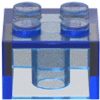 Trans Dark Blue / LEGO Tr. Blue
1978-Present
SHOP COLOR
Trans Dark Blue / LEGO Tr. Blue
1978-Present
SHOP COLOR
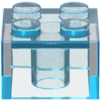 Trans Light Blue / LEGO Tr. Light Blue
1985-Present
SHOP COLOR
Trans Light Blue / LEGO Tr. Light Blue
1985-Present
SHOP COLOR
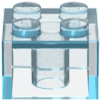 Trans Aqua
2003-2006
Trans Aqua
2003-2006
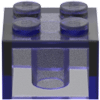 Trans Purple / LEGO Tr. Bright Reddish Lilac
2000-2006
Trans Purple / LEGO Tr. Bright Reddish Lilac
2000-2006
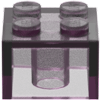 Trans Medium Purple / LEGO
2003-2006
Trans Medium Purple / LEGO
2003-2006
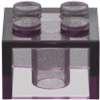 Trans Light Purple / LEGO
2005-2006
Trans Light Purple / LEGO
2005-2006
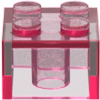 Trans Dark Pink / LEGO Tr. Med. Reddish Violet
1999-Present
SHOP COLOR
Trans Dark Pink / LEGO Tr. Med. Reddish Violet
1999-Present
SHOP COLOR
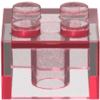 Trans Pink / LEGO Tr. Bright Purple
2003-2006
Trans Pink / LEGO Tr. Bright Purple
2003-2006
Additional Current Colors
Transparent Blue With Opalescence
SHOP COLOR
Transparent Light Blue With Opalescence
SHOP COLOR
Metallic Warm Gold
SHOP COLOR
Metallic Gold Ink
SHOP COLOR
Metallic Silver Ink
SHOP COLOR
Metallic Silver Metallic
SHOP COLOR

Why LEGO Colors Matter
For most casual builders, LEGO colors seem simple—red is red, blue is blue, and yellow is yellow, right? But for collectors, set designers, and builders working on custom projects, color accuracy is essential.Here’s why LEGO colors matter:
MOC Builders Need Precision – Custom builders rely on an extensive color palette to create realistic and visually stunning models. Using the wrong shade of gray or blue can throw off an entire build.
Collectors Value Rarity – Some LEGO colors, like Maersk Blue or Sand Red, were used in only a few sets before being discontinued. Knowing these colors helps collectors find rare parts and appreciate the history behind them.
Replacing Missing Pieces – If you’re restoring a vintage LEGO set or replacing lost pieces, knowing the exact color prevents mixing old and new shades (like Old Gray vs. Bluish Gray).
Matching Colors to Themes – LEGO sets use specific color schemes depending on their theme. Classic Space, Pirates, Castle, and Star Wars each feature distinct palettes that make them recognizable.
LEGO Colors Can Increase Set Value – Sets containing rare colors tend to be more valuable on the secondary market, especially if those colors are no longer produced.
For all these reasons and more, the LEGO Color Guide is an invaluable tool for anyone who loves LEGO!

The Evolution of LEGO Colors
LEGO’s color history spans more than 70 years, evolving from a handful of primary colors to a rich and diverse palette. Here’s a look at how LEGO colors have changed over time.1949–1950s: The Beginning of LEGO Colors
When LEGO first introduced its plastic bricks in 1949, they were available in just five colors: Red, Yellow, Blue, Green and White. These simple, bright colors were chosen to appeal to children and encourage imaginative play. However, color consistency was not a priority — early LEGO bricks often had slight variations in shade due to manufacturing limitations.1958: The Stud-and-Tube System and Improved Colors
In 1958, LEGO patented its now-famous stud-and-tube interlocking system, ensuring that bricks held together more securely. This innovation also led to greater color consistency, although the color palette remained relatively small, with the addition of black bricks for contrast.1970s: Expansion and Realism
As LEGO sets became more detailed, new colors were introduced to enhance realism:Black and Gray became standard for vehicles, buildings, and machinery.
Transparent colors (Clear, Red, Blue) were introduced for windows, lights, and visors.
Tan and Brown appeared in Castle sets for a more natural, medieval aesthetic.
1990s: The Rise of Thematic Colors
With the explosion of LEGO themes like Pirates, Space, and Castle, the LEGO color palette grew significantly:Sand Green, Dark Red, and Dark Blue made their debut.
Neon Transparent Colors (Neon Green, Neon Orange) became popular in Space sets.
Light Gray and Dark Gray were refined for use in Star Wars and Technic sets.
2000s: Standardization and Color Shifts
In 2004, LEGO made a major change by standardizing its colors, leading to:Light Gray → Light Bluish Gray
Dark Gray → Dark Bluish Gray
Flesh Tones replaced yellow for licensed minifigures in Star Wars, Harry Potter, and Superheroes sets.
Earthy Tones like Dark Tan, Olive Green, and Dark Brown became more common.
2010s–Present: The Age of Vibrancy and Sustainability
LEGO continued adding new, vibrant colors, including:Bright Light Orange, Medium Azure, Coral, and Aqua.
Sustainable Plant-Based Polyethylene Parts (first introduced in 2018 for foliage pieces).
Metallic Colors and Unique Shades, like Lavender and Lime Green, which now appear in more niche sets.

How to Identify LEGO Colors
With so many shades to choose from, identifying LEGO colors can be tricky. Here are some of the best ways to figure out exactly what color you’re dealing with:Use Our LEGO Color Guide
We’ve put together a comprehensive LEGO Color Guide that includes:Official LEGO color names
Years in production
Links to purchase current colors on LEGO.com
2. Check Books and Online Resources
The Unofficial LEGO Color Guide by Christopher Bartneck
The Periodic Table of LEGO Colors
3. Build Your Own LEGO Color Chart
Many LEGO fans create physical color charts using actual LEGO bricks. This method is especially helpful for MOC builders who need to match colors accurately.
One great example is the LEGO IDEAS Periodic Table of LEGO Colors project, which showcases colors in an easy-to-reference format.

Why LEGO Colors Are Essential
LEGO’s extensive color palette is a game-changer for builders, collectors, and restorers alike. Whether you’re tracking down a rare shade, identifying a mystery piece, or searching for the perfect match for your latest MOC, the LEGO Color Guide is here to help.
At Ray Gun Bricks, we believe that every LEGO fan deserves access to the best resources, and our LEGO Color Guide is designed to make your building experience smoother, more fun, and more precise.
Start exploring the world of LEGO colors today and take your builds to the next level!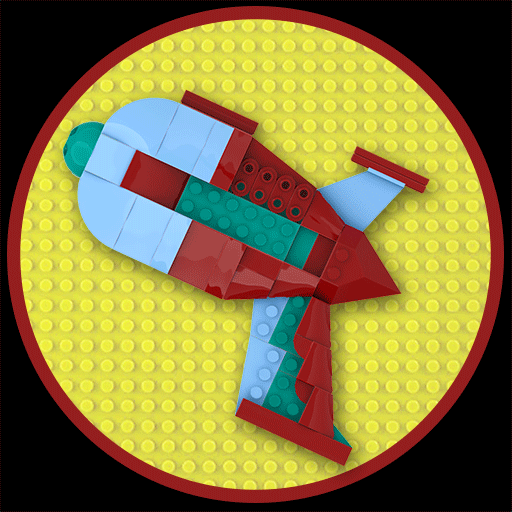
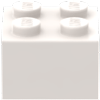 LEGO White
LEGO White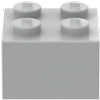 Light Bluish Gray / LEGO Medium Stone Gray
Light Bluish Gray / LEGO Medium Stone Gray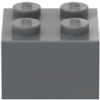 Dark Bluish Gray / LEGO Dark Stone Gray
Dark Bluish Gray / LEGO Dark Stone Gray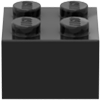 LEGO Black
LEGO Black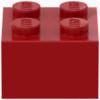 LEGO Dark Red
LEGO Dark Red Red / LEGO Bright Red
Red / LEGO Bright Red LEGO Reddish Orange
LEGO Reddish Orange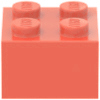 Coral / LEGO Vibrant Coral
Coral / LEGO Vibrant Coral LEGO Dark Brown
LEGO Dark Brown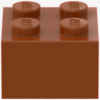 LEGO Reddish Brown
LEGO Reddish Brown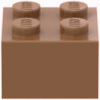 LEGO Medium Brown
LEGO Medium Brown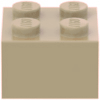 Dark Tan / LEGO Sand Yellow
Dark Tan / LEGO Sand Yellow Tan / LEGO Brick Yellow
Tan / LEGO Brick Yellow Light Flesh / LEGO Light Nougat
Light Flesh / LEGO Light Nougat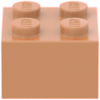 LEGO Nougat
LEGO Nougat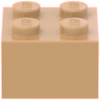 Medium Tan / LEGO Warm Tan
Medium Tan / LEGO Warm Tan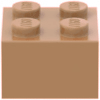 LEGO Medium Nougat
LEGO Medium Nougat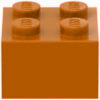 LEGO Dark Orange
LEGO Dark Orange Orange / LEGO Bright Orange
Orange / LEGO Bright Orange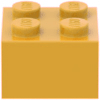 Br. Light Orange / LEGO Flame Yellow Orange
Br. Light Orange / LEGO Flame Yellow Orange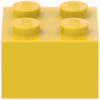 Yellow / LEGO Bright Yellow
Yellow / LEGO Bright Yellow Bright Light Yellow / Cool Yellow
Bright Light Yellow / Cool Yellow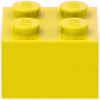 LEGO Vibrant Yellow
LEGO Vibrant Yellow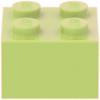 Yellowish Green / LEGO Spring Yellowish Green
Yellowish Green / LEGO Spring Yellowish Green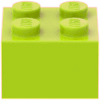 Lime / LEGO Bright Yellowish Green
Lime / LEGO Bright Yellowish Green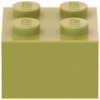 LEGO Olive Green
LEGO Olive Green Dark Green / LEGO Earth Green
Dark Green / LEGO Earth Green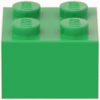 Green / LEGO Dark Green
Green / LEGO Dark Green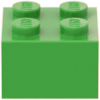 LEGO Bright Green
LEGO Bright Green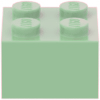 LEGO Sand Green
LEGO Sand Green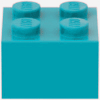 Dark Turquoise / LEGO Bright Bluish Green
Dark Turquoise / LEGO Bright Bluish Green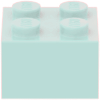 Light Aqua / LEGO Aqua
Light Aqua / LEGO Aqua Dark Blue / LEGO Earth Blue
Dark Blue / LEGO Earth Blue Blue / LEGO Bright Blue
Blue / LEGO Bright Blue Dark Azure / LEGO Dark Azur
Dark Azure / LEGO Dark Azur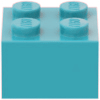 Medium Azure / LEGO Medium Azur
Medium Azure / LEGO Medium Azur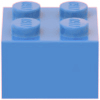 LEGO Medium Blue
LEGO Medium Blue Bright Light Blue / LEGO Light Royal Blue
Bright Light Blue / LEGO Light Royal Blue LEGO Sand Blue
LEGO Sand Blue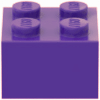 Dark Purple / LEGO Medium Lilac
Dark Purple / LEGO Medium Lilac LEGO Medium Lavender
LEGO Medium Lavender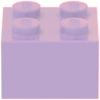 LEGO Lavender
LEGO Lavender Magenta / LEGO Bright Reddish Violet
Magenta / LEGO Bright Reddish Violet Dark Pink / LEGO Bright Purple
Dark Pink / LEGO Bright Purple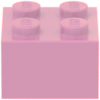 Bright Pink / LEGO Light Purple
Bright Pink / LEGO Light Purple